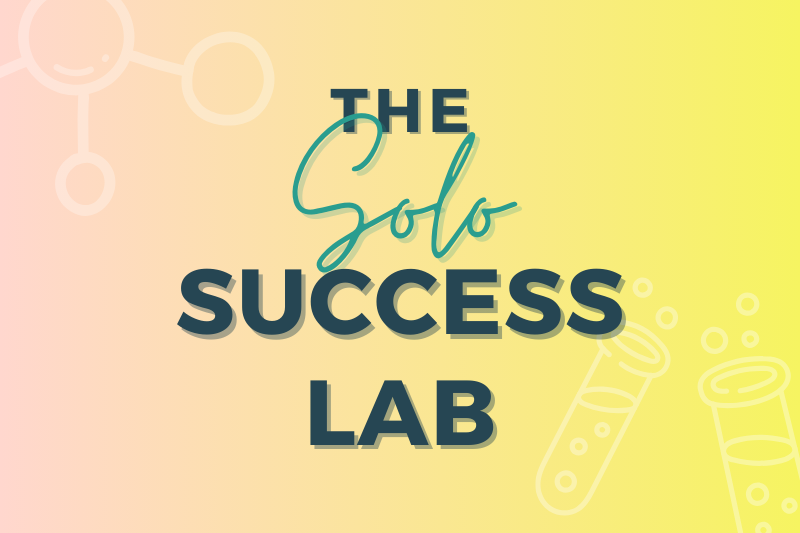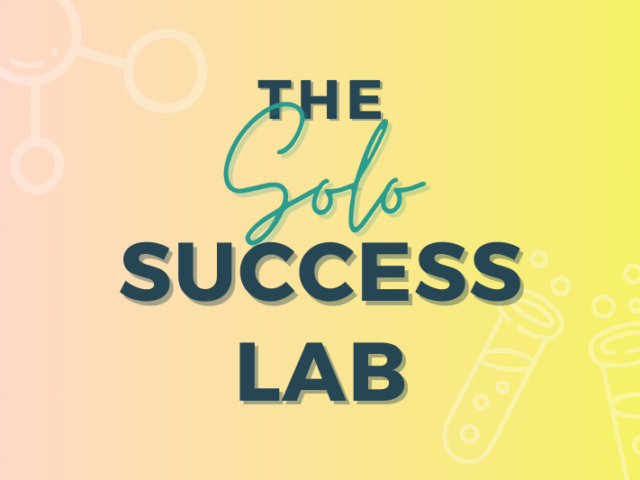When I first started my solo practice, I approached client consultations like a legal version of speed dating. I’d had my checklist of questions. My objective was to get through them, gather the basic facts, quote a fee, and wrap things up in under 20 minutes.
I thought I was being efficient. In reality, I was leaving money on the table and setting myself up for client headaches down the road.
One particularly humbling moment came when a potential client responded to me two days after our consultation to tell me they’d hired someone else. “I just didn’t feel like you understood what I was going through,” they said.
Ouch.
That feedback hit me like a ton of bricks. I realized I had been so focused on getting through my list of questions that I’d forgotten the most important part of the consultation: building a relationship and truly understanding the client’s needs.
So I completely revamped my approach. Instead of rushing, I started treating consultations as the foundation of the entire attorney-client relationship. And something remarkable happened: my conversion rate doubled, my client satisfaction soared, and those middle-of-the-night stress dreams about difficult clients disappeared.
Today, I’m sharing the consultation framework I’ve refined over the years. These questions help me understand not just the legal issues but the human being sitting across from me – their concerns, constraints, and goals.
Let’s dive in.
Setting the Stage
Before diving into the client’s situation, I always take a moment to set expectations. This seemingly small step makes a world of difference in how the consultation unfolds.
“Does now still work for you?”
I start every consultation with this question, even when the client answers the phone right on time. Why? It shows I respect their time from the very beginning. Sometimes life happens – maybe they got pulled into an emergency meeting or their kid got sick at school. Giving them an easy out if they need to reschedule sets the tone that this is a partnership, not just a transaction.
“I wanted to take a few minutes today to learn more about the help you’re looking for with [type of work] and answer any questions you have.”
This simple framing does three powerful things:
- It reminds them we have a limited timeframe (I schedule 20 minutes and make that clear upfront)
- It establishes a structure for our conversation
- It puts them at ease by letting them know they’ll have space to ask questions
A client once told me, “I appreciated that you didn’t make me feel like I was on the clock from the second you called.” The irony? Like most potential clients, that person self-regulated when we got close to the 20-minute mark. They were cognizant of keeping the conversation purposeful yet efficient.
Understanding the Immediate Situation
I begin consultations by letting the client tell their story. I start with an open-ended:
“Tell me a little bit about what’s going on.”
This simple prompt accomplishes so much. It gives potential clients permission to tell their story in their own words, which often reveals emotional cues I’d miss if I jumped straight into fact-gathering. I found that letting someone talk for 3-5 minutes uninterrupted does more to build rapport than anything I could say.
When a soon-to-be-married partner was struggling to explain what she wanted in a prenup, I simply sat back and listened. In those five minutes, I learned not just about the legal issues but about her fears for her financial security and her personal feelings of betrayal having seen her own mother struggle after her parents’ divorce – context that helped me craft a strategy that addressed both her legal and emotional needs.
Depending on the potential client or the type of work they’re look for, some follow-up questions you may want to ask include:
“When did you first notice [this issue]?”
This question does triple duty: it establishes a timeline (crucial for statute of limitations), reveals urgency, and shows the problem’s progression. Plus, asking “when did you first notice” rather than “when did this happen” acknowledges that many legal issues develop gradually rather than occurring in a single moment.
“What have you already done to try and solve [the issue]?”
This question prevents you from wasting time suggesting solutions they’ve already tried, reveals any previous legal counsel (and potential conflicts), and uncovers documentation they may already have. It also shows respect for their agency – acknowledging that they’re not helpless but have already taken steps to try and solve their problem.
Identifying Pain Points
Next, I dig into what’s actually keeping them up at night:
“What is causing you the most worry or stress about this situation?”
The answer to this question often has little to do with the legal technicalities, but it’s what drives the client’s decision-making. A client might be less concerned about maximizing a settlement than ensuring the process doesn’t disrupt their child’s school year. Understanding these priorities helps me align my strategy with what matters most to them.
Other questions you could ask include:
“How is this issue affecting your daily life or business operations?”
This question helps quantify damages, establish case urgency, and reveals practical implications that might not surface otherwise. When a small business owner explains how a contract dispute is preventing her from signing new clients, you can immediately see she likely needs to seek an expedited resolution rather than a protracted battle.
“What have been the financial implications so far?”
Money talks. This question helps assess damages, identify budget constraints, and reveal additional stakeholders. When a potential client explains that they’re facing a financial hit of $50,000 if they end up on the wrong side of the deal, your solution priced at $5,000 becomes a no-brainer. It’s also a natural bridge to discussing your fee structure.
Understanding the Client’s Goals
Now that I understand their situation and pain points, I focus on where they want to go:
“What would an ideal resolution look like to you?”
This question often surprises clients who expect lawyers to dictate the path forward. By asking it, I empower them to articulate their own vision of success. It also helps me assess the feasibility of their desired outcomes and manage expectations early.
For one client going through a difficult divorce, the ideal resolution wasn’t about getting the most assets – it was about minimizing interaction with their ex-spouse and ensuring stable housing for their children. Understanding this helped me tailor my approach from the beginning.
“What timeline are you hoping for?”
Nothing creates client dissatisfaction faster than misaligned expectations about timelines. This question helps set realistic expectations and identify urgent deadlines immediately. If a client says they need resolution in two weeks when the process typically takes six months, better to have that conversation now than later.
Another question you could ask might be:
“What are your biggest concerns about pursuing legal action?”
This question surfaces potential barriers, reveals cost sensitivities, and helps address misconceptions. Many clients have valid fears about the legal process based on horror stories they’ve heard. By acknowledging these concerns upfront, you can address them directly rather than having them simmer beneath the surface.
Assessing Resources and Constraints
While I don’t ask these questions as much now that I am out of the complex space of family law, I often would explore practical limitations with clients to help determine the right service for their budget and expectations, including:
“What resources do you have available to pursue this matter?”
This delicate but necessary question helps determine financial capabilities, identify support networks, and reveal time constraints. Phrasing it as “resources” rather than just “money” helps show you understand that resources can come in many forms – from financial means to emotional support to workplace flexibility.
“Are there any specific constraints or limitations we should be aware of?”
This catch-all question reveals scheduling conflicts, confidentiality concerns, and potential conflicts of interest. If a client mentions that his employer didn’t know he was seeking legal advice, that might completely change how you handle communications.
Consultation Best Practices
Beyond the questions themselves, here are some principles that have transformed my consultations:
- Use open-ended questions: They yield richer information than yes/no questions.
- Practice active listening: Put down your pen occasionally and just listen.
- Allow for silence: Don’t rush to fill pauses – clients often reveal their deepest concerns in the moments after a brief silence.
- Follow up on emotional cues: If a client’s voice quavers or their posture changes when discussing a particular topic, gently explore that area while offering empathy and compassion.
- Periodically summarize: “So what I’m hearing is…” shows clients you’re truly listening and gives them a chance to correct misunderstandings.
- Avoid legal jargon: Nothing kills rapport faster than terminology that makes clients feel out of their depth.
- Maintain a conversational tone: This is a dialogue, not a deposition.
Red Flags to Watch For
Over the years, I’ve learned to pay attention to these warning signs:
- Inconsistent narratives: When the story changes significantly during the consultation
- Unrealistic expectations: “I want this wrapped up by next week”
- Reluctance to share key information: “Do you really need to know that?”
- Signs of duress or undue influence: Especially in estate planning or family law
- Potential conflicts of interest: “My business partner recommended you”
- Statute of limitations concerns: When too much time has passed
Closing the Consultation Effectively
How you end the consultation sets the tone for the entire relationship:
- Summarize key points: “Here’s what I understand about your situation…”
- Outline the service option(s) that meet their needs: Describe what’s included in a way that relates back to the needs and pain points the potential client expressed.
- Provide the fee upfront: Transparency about money builds trust.
- Set expectations for follow-up and do what you say: “I’ll follow up with you by tomorrow with the engagement agreement” or “I will follow up with you next week if I don’t hear from you before then.”
- Provide immediate action items: Give them something concrete to do, even if it’s just gathering documents or responding to your follow up email.
Your Turn: Upgrade Your Consultations
The beauty of a well-structured consultation is that it serves both you and your client. You get better information to assess the case, and they feel truly heard and understood.
If you’re still using the legal speed-dating approach I started with, I challenge you to try this framework for your next five consultations. Pay attention to how clients respond, how much better your case assessment becomes, and how it affects your conversion rate.
The most impactful change I ever made to my practice wasn’t raising my rates or cutting expenses – it was learning how to conduct consultations that build the foundation for strong client relationships.



